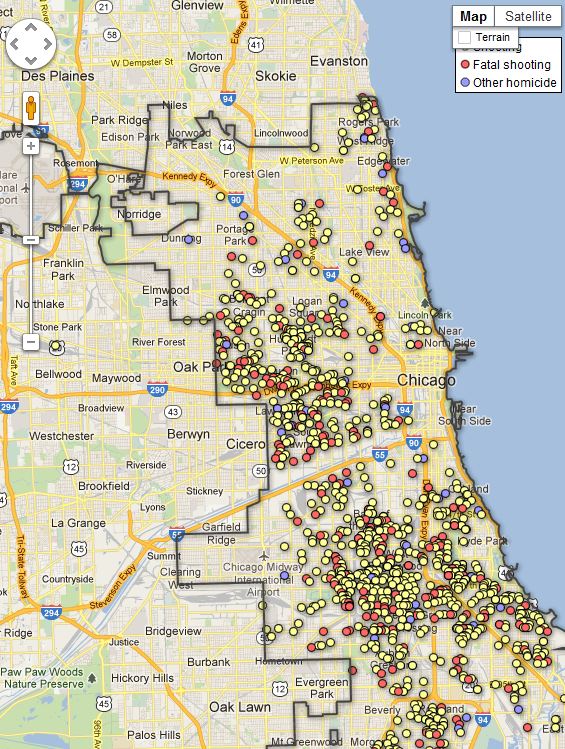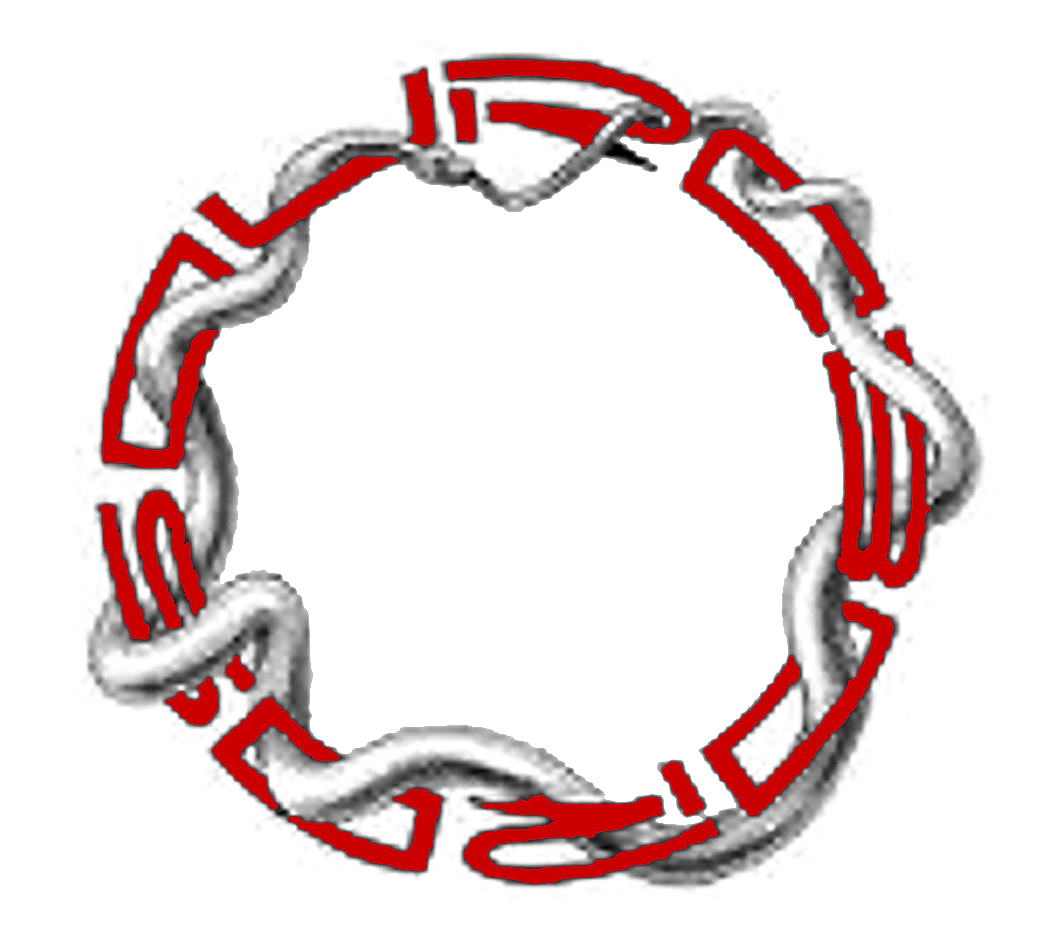blowback in our innercities
October 9th, 2012(read the book free online – read the Reddit AMA)
From Anaheim to the Windy City, America’s urban centers are steadily and relentlessly beginning to rotate into the gyre of violence and retribution that all too often serves to foment revolution and unrest. And with poverty levels surging to the highest levels since the ’60s, the era of America’s last widespread innercity riots, avoiding more violent demonstrations and protests seems increasingly unlikely.
Over the weekend in Anaheim, California an officer involved shooting devolved into an intensely troubling scene which saw police officers firing rubber bullets and beanbag rounds into an already dispersed crowd of civilians and a police dog attacking a mother and child. And then over the next few hours the situation devolved into further chaos:
Throughout the night, police in multiple marked and unmarked squad cars attempted to control an unruly crowd gathered near the shooting scene. Some cordoned off the intersection at East La Palma Avenue and Anna Drive with the same yellow crime-scene tape used by police where the shooting happened.
Some moved a Dumpster into the intersection and set its trash on fire on at least three separate occasions only to be met with multiple officers who kept responding to move it out of the way of traffic.
About 9:30 p.m., an Anaheim helicopter hovered above the crowd while police on the ground brandished batons and other weapons at the crowd, attempting to keep order.
And then the very next day another resident was shot to death by police. Manuel Diaz was unarmed as he fled from police on foot, once caught he was shot in the head. Witnesses claim that Diaz was put down only after he was secured in handcuffs, and although this allegation will be hard to prove one thing is clear from video of the encounter: police didn’t make any effort to preserve Diaz’s life after he’d been apprehended and shot.
These incidents sparked four consecutive nights of protests in Anaheim, with protesters swarming police headquarters demanding answers and an end to the injustice, before turning their ire elsewhere:
As many as 1,000 demonstrators surged through downtown in the Southern California city Tuesday night, smashing windows on 20 businesses and setting trash fires. Police and patrol cars were pelted with rocks and bottles. Hundreds of police used batons, pepper balls and beanbag rounds.
The full story of exactly how events managed to spin so horribly out of control so quickly hasn’t yet been formed, and may never be – following the incident four separate individuals approached a CBS reporter and claimed that police officers had attempted to buy footage of the riots off their cell phones. This virulent tension, between police officers and the communities they’re meant to serve, is far from unique to Anaheim – within American innercities it’s much more often the rule than the exception:
And it doesn’t take police intervention to lead to violence. This summer is shaping up to be the most lethal in recent Chicago history as gang violence roils out into public view, stirring up an unprecedented number of revenge shootings and civilian casualties. The situation has devolved so far that one Chicago police sergeant described the situation as “tribal warfare on the streets.”
In the second-to-last weekend of May, the Windy City’s bodycount was 4 dead and 28 wounded, ranging in ages from 7 years-old to 68. Memorial Day weekend saw 11 killed and over 40 injured, a week later saw sustained violence: 9 dead and 46 wounded. Between Saturday night and Sunday night alone 20 people were shot. The summer gun violence hasn’t calmed down at all: the weekend of June 17th saw 7 killed and nearly 40 injured by gun violence in Chicago, the next weekend pushed the total June bodycount to 20, and on the 4th of July alone 5 were killed and 21 wounded.
Although some shootings were obviously targeted, home invasions and apparent gang violence, a handful of them have troubling elements of randomness to them:
Two people died after someone produced a handgun and fired several shots into a crowd of people in the 700 block of West 50th Place about 11:15 p.m. Sunday, hitting five people, police said.
A white four-door car pulled up to a group of boys near the intersection of West 69th Street and South Artesian Avenue and someone inside opened fire.
So far 2012 is on pace to be the bloodiest summer ever in the Windy City, there have been far more murders in the city than U.S. troops killed in Afghanistan, and the annual homicide rate is up 38% from last year. This interactive graphic helps captures the extend of the violence:
A little while back al-Qaeda’s American-born spokesman “Adam the American” released a video exhorting Muslims in America to wage the “death by a-thousand cuts” version of jihad. Instead of looking to stage large dramatic attacks which would require months of preparation and planning, he implored would-be jihadis to simply buy guns and start shooting people:
Muslims in the West have to remember that they are perfectly placed to play an important and decisive part in the jihad against the Zionists and Crusaders, and to do major damage to the enemies of Islam waging war on their religion, sacred places, and brethren. This is a golden opportunity.
“The way to show one’s appreciation and thanks for this blessing, is to rush to discharge one’s duty to his [community] and fight on its behalf with everything at his disposal. And in the West you’ve got a lot at your disposal. Let’s take America as an example, American is absolutely awash with easily obtainable firearms…
So what are you waiting for?
And while there’s absolutely no evidence whatsoever that the recent shooting deaths in Chicago have anything at all to do with waging a campaign of terror on behalf of al-Qaeda, the marked uptick in violence is a troubling indication that our innercities may implode totally on their own, without any outside influence at all. The greatest threat of violence in American isn’t from outsiders coming here to try and blow stuff up.
But why would our innercity Latino and African-American communities be the most likely sources of upheaval? For both communities, about three-times more of them live in prison cells than in college dorms. And with over half of those in federal prison serving time for a drug offense, it’s not difficult to pinpoint the primary source of this horrible pedagogical disparity.
As our military pours billions and billions of dollars into stopping threats from abroad, it’s important to keep in mind that the biggest threat to American security is right here at home: an implosion of our innercities brought about by the social and economic devastation wrought as the War on Drugs created a cycle of absence by imprisoning so many fathers and destroying the hope of entire communities for economic advancement:
The precise era that saw a drug-law fueled explosion in our prison population, the early 1970s, are the exact same years that the economic situation of blacks began to starkly worsen and that the gap between rich and poor is wrenched wide open. Beginning in those years and continuing into today, “the economic status of black compared to that of whites has, on average, stagnated or deteriorated.”
Up until 1973, the precise year the Rockefeller drug laws were passed, the difference between black and white median income had been closing. But then that year it changed course, and in “an ominous bellwether… the gap between black and white incomes started to grow wider again, in both absolute and relative terms.” Direct empirical research into incarceration’s economic effects weren’t done until recently, when a Pew Charitable Trusts research paper showed that prior to imprisonment two-thirds of male inmates were employed and half were their family’s primary source of income. Additionally, upon release an ex-con’s annual earnings were reduced by 40%
And on Tuesday night, southern Dallas saw tensions swell as “an unruly, armed crowd” gathered to protest the officer-involved shooting death of an unarmed man who was fleeing the scene of a bogus 911 call. Although things never went from tense to turbulent, the neighborhood seemed just one more bullet away from full-on conflict:
As the large crowd gathered on the street, and as police in riot gear swarmed in an effort to keep the peace, people on the street insisted that Harper had been shot in the back… dozens of police, some of them with riot shields and helmets or carrying large assault rifles, had cordoned off the intersection. On either end of Dixon, more police vehicles blocked cars from driving through the area. A crowd of what looked like several hundred people, including many women and children, were gathering in groups all up and down Dixon.
Many of the people on the street after the shooting said they were friends and relatives of Harper’s. Many, too, were furious about the number of police shootings in Dallas this year: there have been 13 others so far, eight of them fatal. (To counter-balance those numbers, Brown noted last night that assaults on officers are up from last year.)
The scene outside Dallas well illustrates the distrust and tension behind so much of this nascent violence, as one man noted that within the SWAT team sent to contain the neighborhood “I see a lot of white folks and no black folks,” and that “I was up there standing up there over the body. And every one of them was laughing at the man, like they killed a deer or an animal.”
Here too the War on Drugs was at play, officers responding to the bogus 911 call were likely tricked by a rival gang’s ploy, and were well-aware they were storming a house known for selling weed. As the victim’s mom put it: “I lost my son over a bag of damn weed.”
At this point the only question worth asking may be: who’s next?
Category: Chicago, current affairs, domestic terror, drug violence, islamist, legalize marijuana, militant islam, Muslim, organized crime, racial inequality, racial tension, racism, reform, revolution, terrorism, war on drugs | Tags: civil unrest, domestic terrorism, income inequality, innercity violence, islam, militant islam, racial wealth disparity, war on drugs, welfare state Comment »






